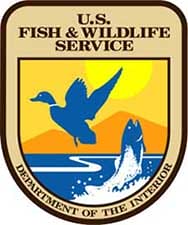

Washington, DC -(AmmoLand.com)- The U.S. Fish and Wildlife Service (Service) today announced it is listing the military and great green macaws as endangered under the Endangered Species Act (ESA).
Both bird species are endemic to Central and South America. The agency found that both species are in decline, primarily due to habitat loss, fragmentation and degradation, small population size, and poaching. Further, the existing regulatory mechanisms designed to protect these macaws are not adequate to prevent those threats from impacting them throughout their ranges.
As a result both macaws are at risk of extinction throughout their ranges – the definition of an endangered species – and in need of protection. The military macaw inhabits tropical, semi-deciduous forests in Mexico and South America. Although it has a large distribution, its population, ranging from 6,000 to 13,000 adults, is highly fragmented into small localized groups ranging from a few pairs to approximately 100 individuals.
The great green macaw occupies humid tropical forests primarily in Central America and parts of northern South America. Its population, now ranging from 1,000 to 3,000 individuals, is in decline.
The Service recognizes the valuable, ongoing conservation efforts to protect these species by a number of private individuals, national and local governments and nongovernmental organizations, including the Wildlife Conservation Society and Fundación ProAves. These efforts include providing training to local communities to monitor populations and studying species via satellite transmitters to determine the species’ home range and specific habitat. However, in spite of these notable contributions, great green and military macaw populations continue to decline.
As a result of this listing, certain activities involving these two bird species will be prohibited without a permit, including: import into and export out of the United States; “take” (defined by the ESA as harm, harass, kill, injure, etc.) within the United States; and interstate and foreign commerce. By regulating these activities, the ESA ensures that U.S. citizens and individuals subject to the jurisdiction of the United States do not contribute to the further decline of these species.
Permits will be issued for otherwise prohibited activities only for scientific purposes that benefit the species in the wild, or to enhance the propagation or survival of the species, including but not limited to habitat restoration and research.
The final rule will publish in the Federal Register on October 2, 2015, and will go into effect 30 days after publication on November 2, 2015. For more information and a copy of the final rule, visit: http://www.fws.gov/endangered/
The ESA provides a critical safety net for fish, wildlife and plants and has prevented the extinction of hundreds of imperiled species, as well as promoting the recovery of many others. The Service is actively engaged with conservation partners and the public in the search for improved and innovative ways to conserve and recover imperiled species.
To learn more about the Endangered Species program’s Branch of Foreign Species, visit: http://www.fws.gov/endangered/
About the U.S. Fish and Wildlife Service:
The mission of the U.S. Fish and Wildlife Service is working with others to conserve, protect, and enhance fish, wildlife, plants, and their habitats for the continuing benefit of the American people. We are both a leader and trusted partner in fish and wildlife conservation, known for our scientific excellence, stewardship of lands and natural resources, dedicated professionals, and commitment to public service. For more information on our work and the people who make it happen, visit www.fws.gov. Connect with our Facebook page, follow our tweets, watch our YouTube Channel and download photos from our Flickr page.
For more information on our work and the people who make it happen, visit http://www.fws.gov/.
